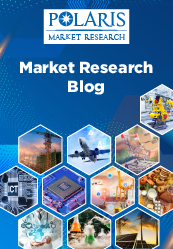Smart Personal Protective Equipment: Improving Workplace Safety
There is more to workplace safety today than simply following the required regulations; it's about saving lives and managing how people conduct their work. Smart personal protective equipment (PPE) gives a new perspective on safety by bringing new technologies into everyday gear. Whether it's wearables or other next-gen devices, these tools can help detect risk early and manage response efforts quickly.
This blog post serves as your one-stop guide for learning about smart PPE. It includes the basics, components, and use cases for smart personal protective equipment. It also covers relevant stats and market outlook for the smart personal protective equipment market.
What is Smart Personal Protective Equipment?
Smart personal protective equipment fuses digital technology into traditional safety gear. The equipment provides real-time monitoring and sharing of information about the worker's environment and safety. Smart personal protective equipment is different from traditional PPE available in the personal protective equipment market. Here, the intelligent layer of equipment consists of sensors that can monitor temperature, air quality, and other important parameters.
For example, consider a smart helmet. Helmets can monitor for unsafe levels of gas and immediately alert the worker and supervisor. Then there are smart glasses that can provide augmented reality instructions to help the worker safely and effectively complete a task. The smart technology allows safety teams to respond quickly to prevent incidents from happening in the first place.
What Are Key Market Stats?
Our smart personal protective equipment market report notes the market to witness sustained growth. The market for smart PPE stood at USD 1.35 billion in 2024. It is projected to account for a CAGR of 14.45% between 2025 and 2034.
The expansion of the mining industry across the globe has created an increased demand for smart protective equipment. The growing defense spending worldwide is also contributing to the smart personal protective equipment market expansion, as military forces focus on providing improved safety and efficiency of personnel.
What Are Key Smart PPE Technologies?
Sensors
Sensors are one of the key elements of smart PPE. They are present in helmets, gloves, and other smart PPE for monitoring both the environment and the health of the wearer. Sensors are capable of measuring various parameters. These include heart rate, noise levels, and air quality. The collected data helps detect potential risks. Modern sensors are designed to operate in challenging industrial settings.
Connectivity (IoT)
The IoT technology is essential for communication in smart PPE. The use of wireless technologies such as Bluetooth Low Energy (BLE) and Wi-Fi enables the transmission of data from the equipment to centralized systems. With the help of real-time connectivity, supervisors and safety managers can monitor worker conditions remotely and track locations in hazardous zones. The integration of smart PPE with broader industrial systems allows for a unified network that allows for seamless exchange of information.
Artificial Intelligence (AI)
AI is used for the transformation of raw sensor data into intelligence that can be acted on. AI is capable of finding subtle patterns in worker behavior or environmental data that may be an indicator of emerging risks. Machine learning algorithms can make use of historical safety data for predicting areas where accidents are more likely to occur. The use of AI in large-scale operations enables the identification of recurring risks and optimizing staff.
Cloud and Edge Computing
Large amounts of data are generated by smart PPE. As such, efficient management of data is important. The scalable storage and centralized access of smart PPE allow organizations to analyze long-term safety trends. However, total reliance on cloud processing can lead to delays in high-risk environments. This is where the edge computing market helps. Edge computing does local processing of important information to trigger instant alerts or automatic safety actions.
How Smart PPE Improves Workplace Safety?
Real-Time Hazard Detection
The environments of industries such as mining and chemical manufacturing are often unpredictable and involve high risk. Here, hazards such as toxic gases and high temperatures can arise suddenly. Solutions from the smart personal protective equipment market does constant monitoring of these environments. The detection of unsafe conditions results in the system issuing audible or visual alerts. The systems are also capable of activating ventilation systems and notifying supervisors.
Monitoring Health and Fatigue
Fatigue and dehydration can occur in jobs that require strenuous labor. Smart PPE enables continuous monitoring of biometric data. The assessment of biometric data early allows detection of heat stress or overexertion. For example, a smart vest may vibrate to prompt a worker about hydration or resting when it has determined that data is out of normal readings.
Enhanced Communication
Communication is not always clear in hazardous working areas. This is even more true within the working environment if noise or distance barriers exist between workers. Smart PPE can include microphones and speakers so that workers and supervisors are in constant communication. Also, in case of an injury, the equipment enhances emergency coordination and enable emergency responders to locate workers more quickly.
Data-Driven Insights
Smart PPE helps with long-term safety management. The data collected from multiple devices over time can reveal recurring risks. This information can then be used by safety managers to make smarter decisions. The shift towards the prediction and prevention of accidents helps create an environment that’s safe and efficient.
Conclusion
Workplace safety has evolved over the years. And smart personal protective equipment has an important role in the evolution. The use of advanced technologies in smart PPE allows workers to operate in a safe and confident way. The key players in the smart personal protective equipment market are increasingly focusing on new product launches to offer more innovative solutions. In the coming years, we can expect to see increased partnerships among market participants to broaden their market presence.


